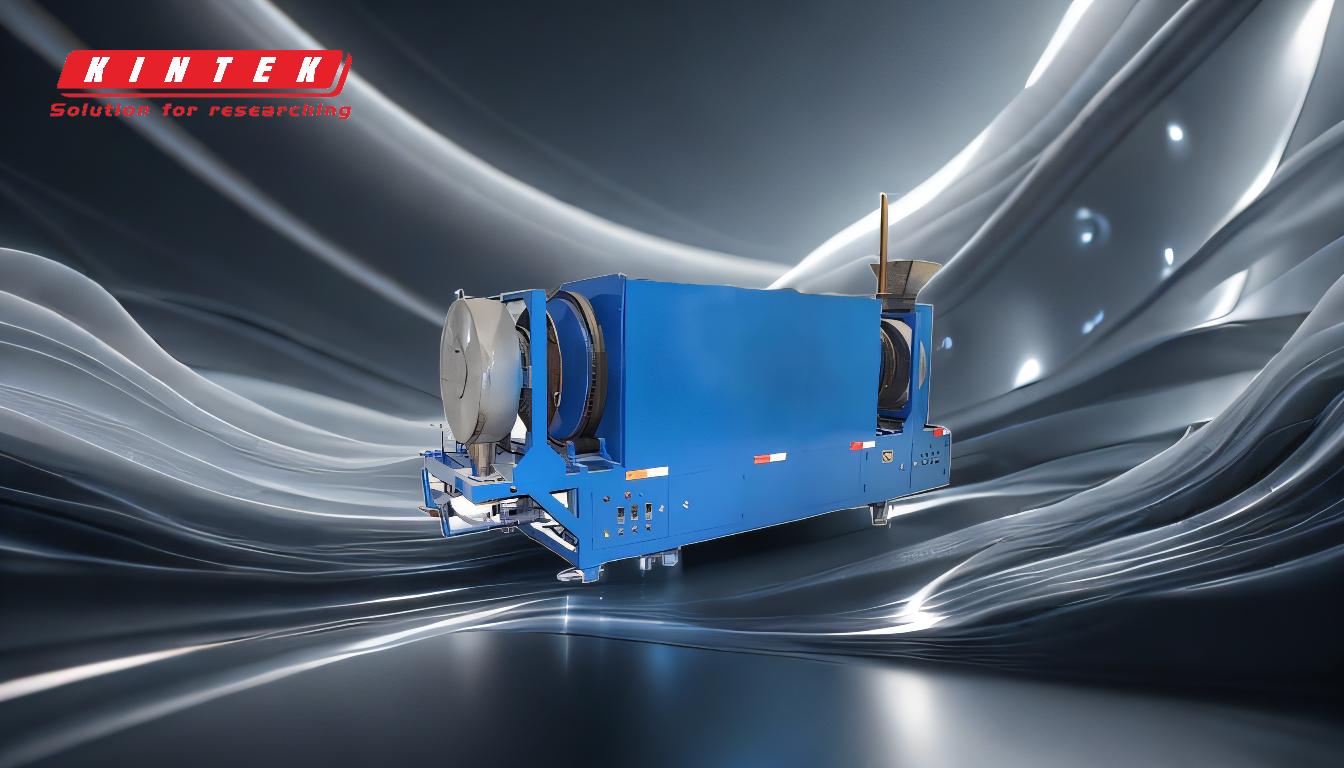Pyrolysis is a thermal decomposition process that converts organic materials into valuable products like biochar, bio-oil, and syngas in the absence of oxygen. To successfully conduct pyrolysis, several key factors must be considered, including feedstock characteristics, equipment requirements, and energy needs. The feedstock must have low moisture content (typically less than 15%) and be size-reduced to ensure efficient heat transfer and reaction kinetics. A variety of materials, such as agricultural waste, plastics, rubber, and oil sludge, can be processed using pyrolysis. The equipment setup includes a cracking furnace, feeding system, heating system, waste gas recovery system, and dust removal system. Energy requirements involve heating the feedstock, evaporating moisture, and compensating for heat losses. Below, the key aspects of pyrolysis are explained in detail.
Key Points Explained:

-
Feedstock Requirements:
-
Moisture Content:
- The feedstock must have a low moisture content, ideally around 10% or less, to ensure efficient pyrolysis. High moisture content requires additional energy for evaporation, which can reduce the overall efficiency of the process. Materials like sludge or meat processing waste may need pre-drying.
-
Particle Size:
- The size of the feedstock is critical for effective heat transfer. Most pyrolysis systems require particles to be smaller than 2 mm, though some systems can handle sizes up to 20 mm. Smaller particles ensure uniform heating and faster reaction rates.
-
Moisture Content:
-
Types of Feedstock:
- Pyrolysis can process a wide range of materials, including:
- Agricultural Waste: Crop residues, straw, and husks.
- Forestry By-products: Wood chips, sawdust, and burned trees.
- Plastics: HDPE, LDPE, PP, PS, and PC (PVC and PET are typically excluded due to harmful emissions).
- Rubber: Natural and synthetic rubber products, including tires.
- Oil Sludge: Refinery waste, drill cuttings, and coastal sludge.
- Animal Wastes: Mixed with other feedstocks for co-processing.
- Pyrolysis can process a wide range of materials, including:
-
Temperature and Reaction Conditions:
- Pyrolysis occurs in the absence of oxygen at temperatures ranging from 350°C to 800°C. The specific temperature depends on the feedstock and desired end products:
- Lower temperatures (350°C–550°C) favor biochar production.
- Higher temperatures (700°C–800°C) maximize syngas yield.
- The process involves thermal degradation of organic materials through simultaneous and successive reactions.
- Pyrolysis occurs in the absence of oxygen at temperatures ranging from 350°C to 800°C. The specific temperature depends on the feedstock and desired end products:
-
Energy Requirements:
- The pyrolysis process is energy-intensive and involves:
- Heating the feedstock and any contained water to 500°C.
- Evaporating moisture at 100°C.
- Providing energy for the endothermic pyrolysis reaction.
- Compensating for heat losses to the environment.
- Efficient energy management is crucial for the economic viability of the process.
- The pyrolysis process is energy-intensive and involves:
-
Equipment Setup:
- A pyrolysis system typically includes the following components:
- Cracking Furnace: The core unit where thermal decomposition occurs.
- Feeding System: Ensures a consistent and controlled supply of feedstock.
- Heating System: Provides the necessary heat for the pyrolysis reaction.
- Waste Gas Recovery and Reuse System: Captures and recycles gases to improve efficiency and reduce emissions.
- Dust Removal System: Filters out particulate matter to ensure clean operation and compliance with environmental regulations.
- A pyrolysis system typically includes the following components:
-
Output Products:
- The pyrolysis process yields three main products:
- Biochar: A carbon-rich solid used as a soil amendment or fuel.
- Bio-oil: A liquid product that can be refined into fuels or chemicals.
- Syngas: A mixture of hydrogen, carbon monoxide, and methane used for energy generation.
- The pyrolysis process yields three main products:
-
Environmental and Economic Considerations:
- Pyrolysis offers a sustainable solution for waste management by converting waste materials into valuable products.
- The process reduces landfill dependency and greenhouse gas emissions.
- However, the economic feasibility depends on factors like feedstock availability, energy costs, and market demand for pyrolysis products.
By addressing these key points, a pyrolysis system can be optimized for efficient and sustainable operation, making it a viable option for waste-to-energy and resource recovery applications.
Summary Table:
| Key Aspect | Details |
|---|---|
| Feedstock Requirements | - Moisture content: ≤10% ideal - Particle size: <2 mm for uniform heating |
| Types of Feedstock | Agricultural waste, plastics, rubber, oil sludge, animal wastes |
| Temperature Range | 350°C–800°C (lower for biochar, higher for syngas) |
| Energy Requirements | Heating feedstock, evaporating moisture, compensating heat losses |
| Equipment Setup | Cracking furnace, feeding system, heating system, gas recovery, dust removal |
| Output Products | Biochar, bio-oil, syngas |
| Environmental Benefits | Reduces landfill dependency and greenhouse gas emissions |
Ready to optimize your waste-to-energy process? Contact us today for expert guidance on pyrolysis systems!















